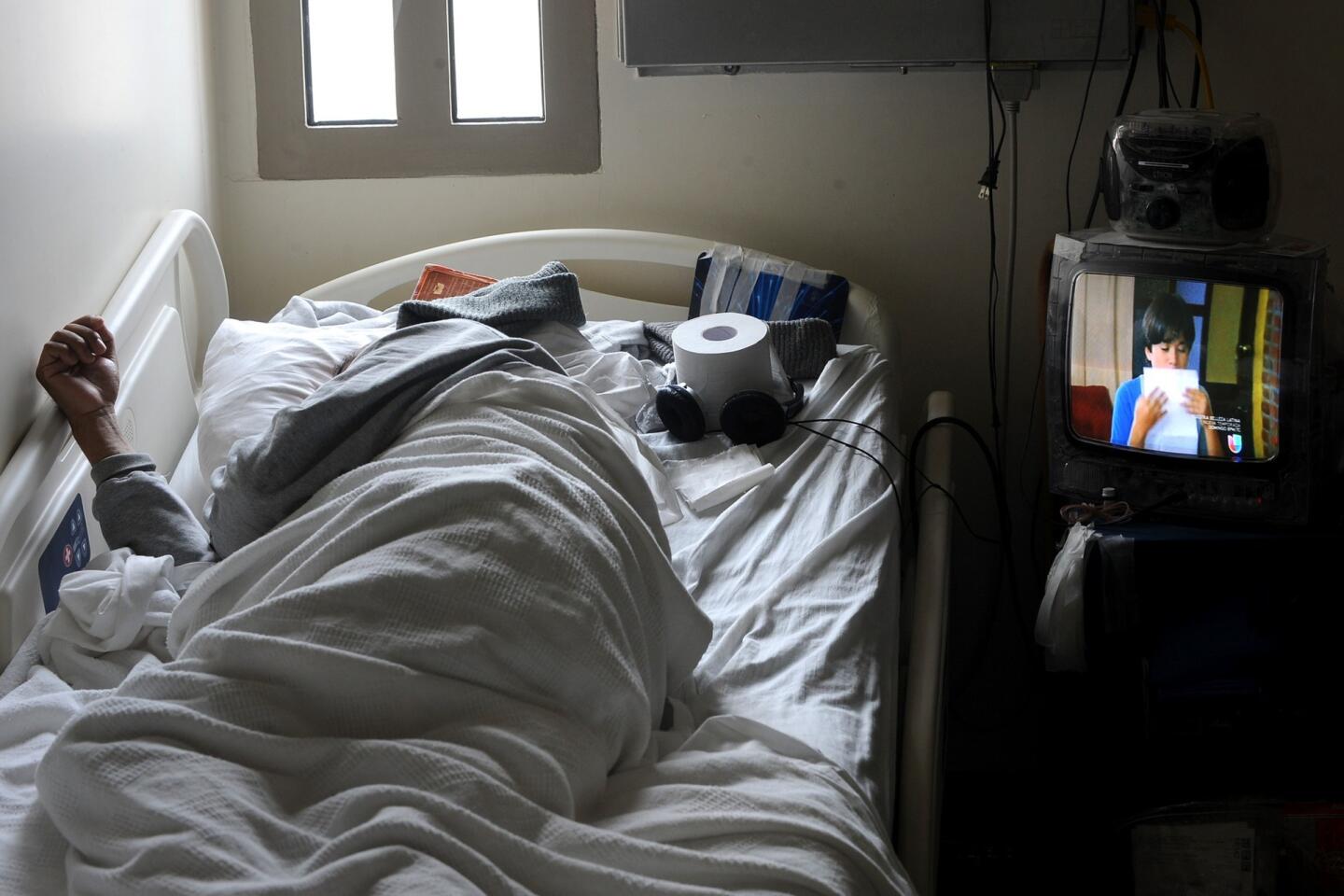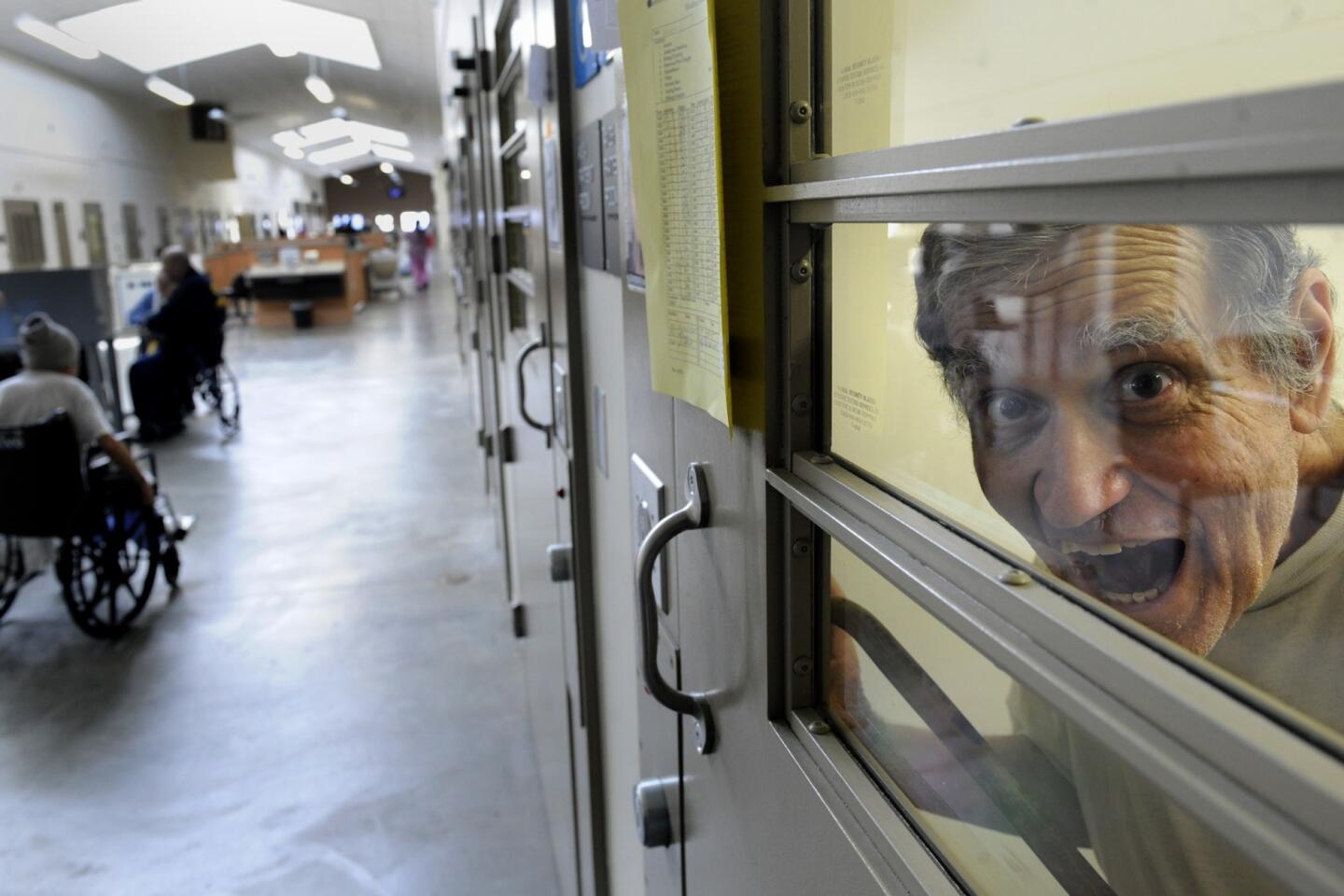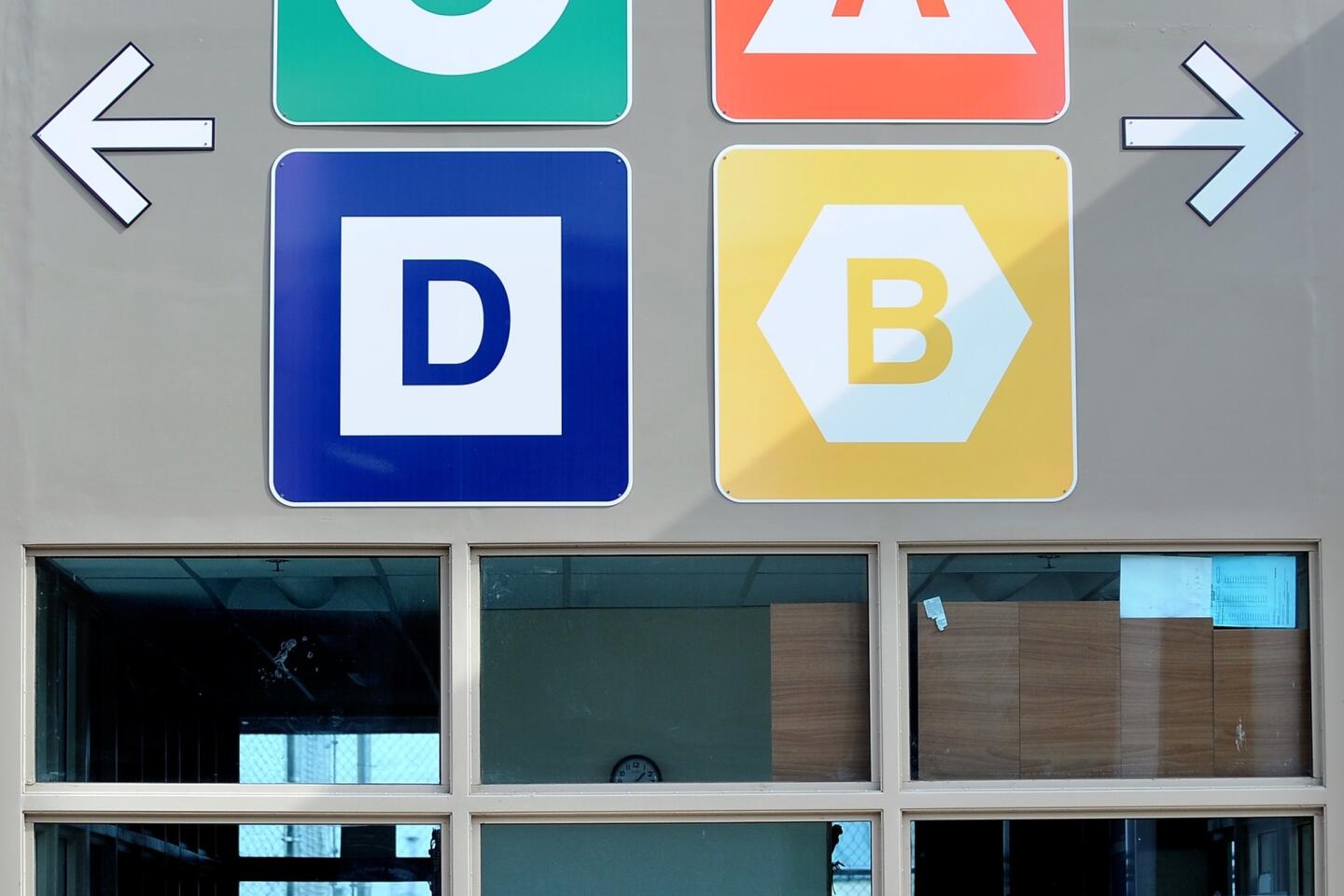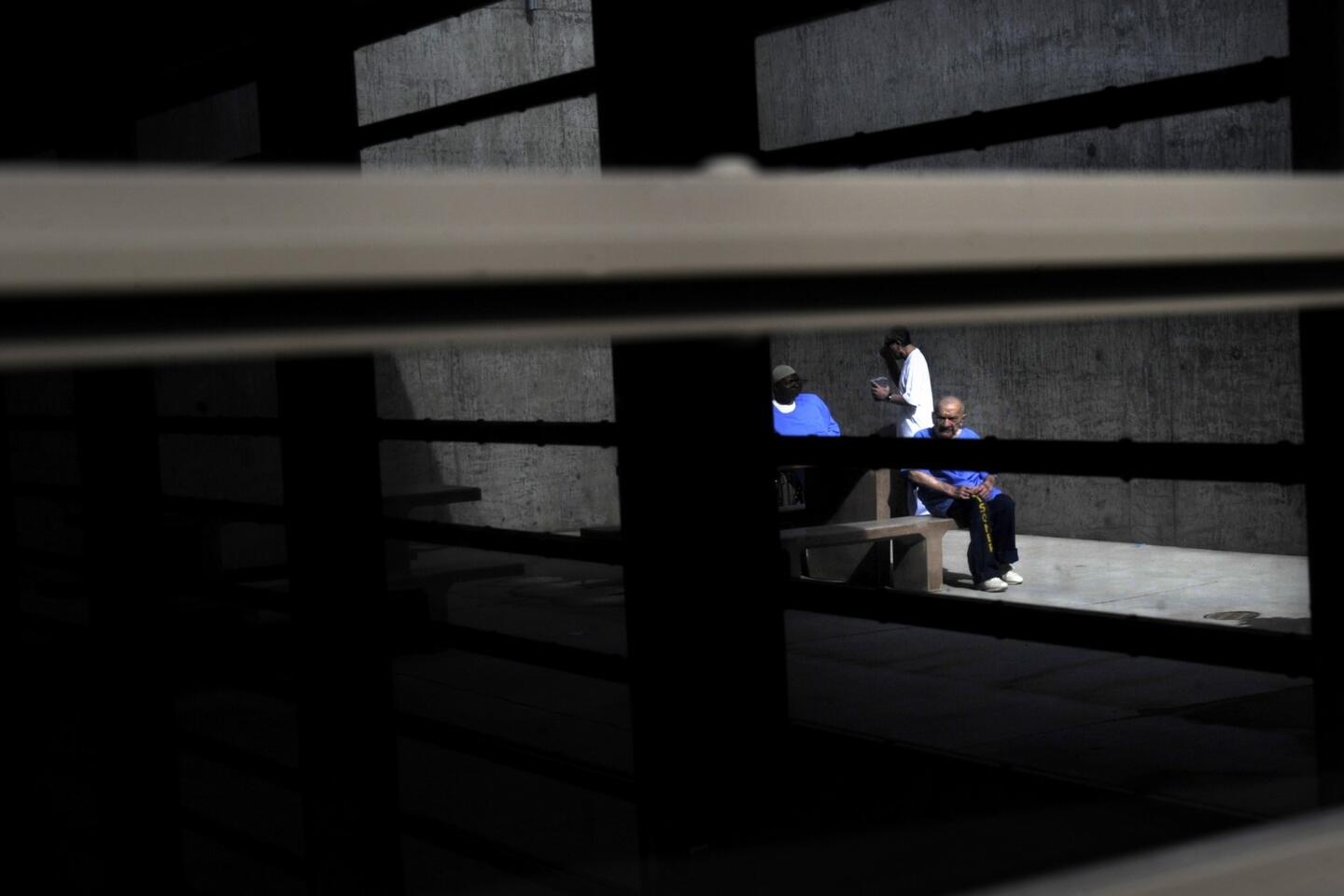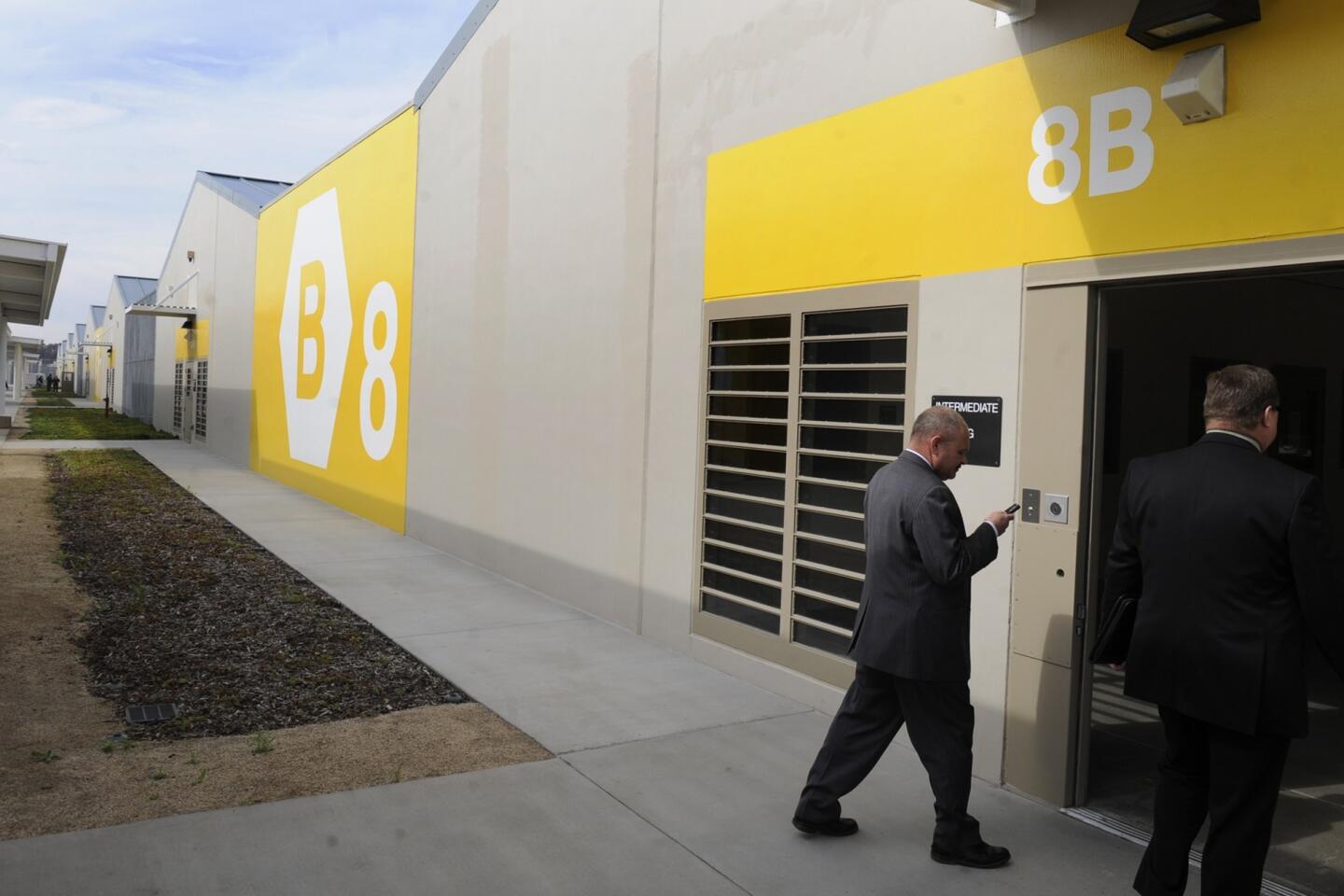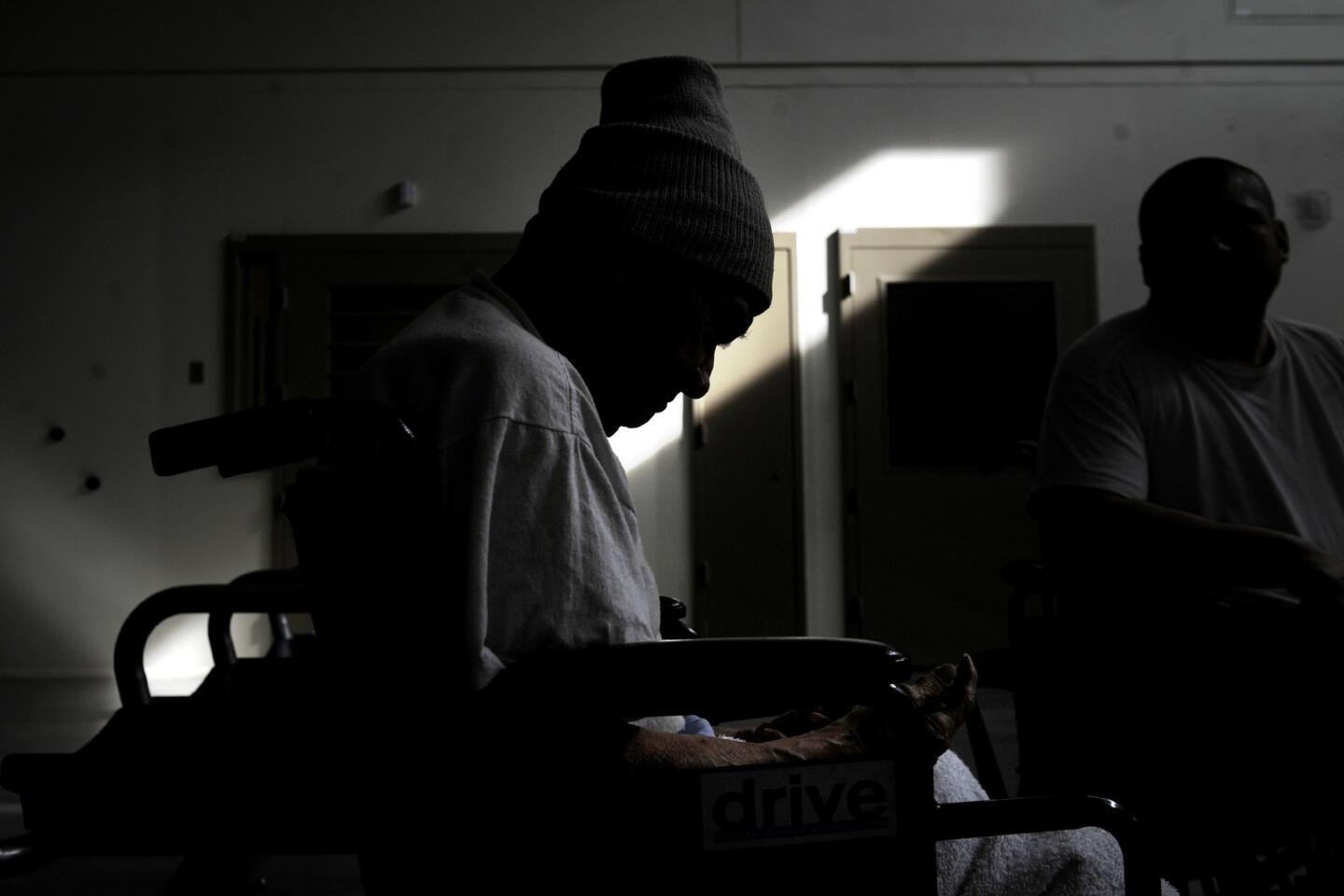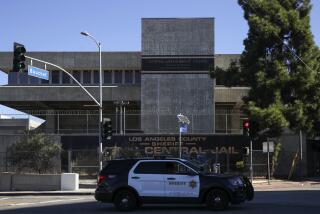California’s medical prison beset by waste and mismanagement
FRENCH CAMP, Calif. —California’s $840-million medical prison — the largest in the nation — was built to provide care to more than 1,800 inmates.
When fully operational, it was supposed to help the state’s prison system emerge from a decade of federal oversight brought on by the persistent neglect and poor medical treatment of inmates.
But since opening in July, the state-of-the-art California Health Care Facility has been beset by waste, mismanagement and miscommunication between the prison and medical staffs.
Prisoner-rights lawyer Rebecca Evenson, touring the facility in January to check on compliance with disabled access laws, said she was shocked by the extent of the problems.
“This place was supposed to fix a lot of what was wrong,” she said. “But they not only were not providing care, but towels or soap or shoes.”
Reports filed by prison staff and inmate-rights lawyers described prisoners left in broken wheelchairs and lying on soiled bedsheets. At one point, administrators had to drive into town to borrow catheters from a local hospital.
Prisoner advocates in January quoted nurses who complained they could not get latex gloves that fit or adult diapers that didn’t leak. The shortages were documented in a report sent to corrections officials in Sacramento.
Even the laundry became a battleground.
Over several months, the warden ordered more than 38,000 towels and washcloths for a half-opened prison housing slightly more than 1,300 men — nearly 30 for each patient.
Even so, prisoner advocates reported, inmates were drying off with socks — or not allowed showers at all. Their towels had been thrown away.
Deborah Hoffman, a spokeswoman for the state Department of Corrections, said problems are unavoidable for any new lockup, and in this case were complicated by the medical prison’s mission.
“It’s not uncommon for new facilities to have stops and starts,” Hoffman said, adding that “it is taking time to work out the bugs.”
But J. Clark Kelso, the court-appointed federal overseer for California’s prison medical system, said the facility’s woes go beyond shortages and missteps.
Speaking outside a March legislative hearing on the prison’s struggles, Kelso said a general apathy had set in with the staff.
“Because these really basic systems weren’t working, everybody kind of went into an island survival pattern,” he said. Adjusting to dysfunction, rather than fixing it, became “how we do things around here.”
The troubles at the new prison outside Stockton reflect the decade-long battle for control of California’s prisons, a system that also is the state’s largest medical care provider.
In 2006, a federal judge declared that the prisons provided unconstitutionally poor healthcare. One inmate a week was dying of neglect or maltreatment, the judge found.
Since then, care has been split between two masters: the state Corrections Department, responsible for general custody, and Kelso, who is in charge of the $1.7 billion-a-year prison medical system.
The bifurcated lines of authority extend down to nursing aides and guards on the cellblock — each with separate channels of communication.
At the prison, there was disagreement from the start over who should manage the complex, a campus of 48 stand-alone medical and psychiatric wards with soaring ceilings and bright skylights.
Kelso wanted a medical officer in charge. His goal has been to steer the state toward a system that puts healthcare on a par with security.
The state corrections department agreed at first, then brought in a warden: Ronald J. Rackley, who had been warden at the Deuel Vocational Center near Tracy.
During a tour of his new domain, Rackley acknowledged he had no experience with delivering medical care, boasting that he had never been admitted to a hospital.
The first medical manager Kelso appointed to serve as Rackley’s counterpart lasted five months.
In December, as reports of conditions within the prison continued to deteriorate, Kelso brought in Jackie Clark. A registered nurse with an MBA, she oversaw the smooth launch of a $135-million medical clinic at San Quentin Prison two years ago.
At the new prison, Clark and Rackley commanded separate staffs and answered to separate bosses.
Though they work in the same building, the two sometimes offer versions of problems within the prison that are as different as night and day.
Consider the towels.
The prison’s laundry is collected and shipped to another facility, where it is washed by inmates. Nurses separate out the towels that are soaked in blood and urine — putting them in biohazard bags — to be sanitized. Somehow, those bags ended up in the trash.
Rackley blamed the nurses for “throwing them out.”
His solution to the shortages that ensued was to buy more linens — 38,100 towels and washcloths at a cost of $31,532, nearly five times the standard issue. He then assigned prison laborers to scout the trash daily to retrieve dirty linen.
“We were very challenged to figure out where they were going,” Rackley said.
Clark said she was unaware that nurses had been accused of throwing away the towels until she heard of it secondhand from reporters touring the prison in late February.
Many other necessities also were reported to be in short supply.
To solve a soap crisis — there was not enough for prisoners to take regular showers — Rackley said he ordered 400 bars for each prison ward of 60 men, 10 times the normal ration. He said he followed up with another bar hand-delivered to every patient.
Rackley again blamed nurses for the problem, saying they depleted the original store by giving prisoners too much.
Other system problems added to the expense and frustration, Kelso said in a report to federal judges.
Food from the prison kitchen flunked health inspections, forcing thousands of meals to be trucked in from Stockton at $10 each. And when the kitchen did open, a sophisticated heating system melted the costly food trays’ plastic covers.
Computer glitches in an automated warehouse inventory system required orders be processed by hand. The electronic medical records system was so difficult to use that doctors reverted to paper.
The state also had underestimated the number of nurses and guards needed, and there were not enough staffers to unlock doors, help disabled prisoners move about or take patients to the showers. Other inmates were recruited to help. Prisoner advocates reported seeing a man in a wheelchair whose job it was to push the wheelchair of another inmate. A disabled prisoner said he had been left to sit on the toilet for hours.
By late December, staffing shortages were so severe that the prison was in jeopardy of losing its operating licenses, according to a report by a state troubleshooter.
Nevertheless, officials continued to bring more inmates to the facility.
Then, in early January, a prisoner died.
John Earl Cartwright, a stroke victim, had pressed his buzzer repeatedly to summon a night nurse, according to prisoner witnesses. One nurse came, then left. It was quiet for a while, and then the buzzer began sounding again.
Inmate Donta Ivory said in an interview that he could hear Cartwright in the cell next to him: “He kept saying, ‘Help, help, I need some help.’”
Ivory said he knelt to the floor and hollered “Man down!” through the crack beneath his door.
It was another 30 minutes before the nurse came, he said. Cartwright was pronounced dead of cardiac arrest the next day.
The incident prompted training of nurses on the operation of the prison’s bedside call system, consisting of multiple buttons intended to signal different needs, Clark said.
Kelso was stunned to find his staff struggling with such a basic aspect of medical care. “Why on earth in six to nine months you haven’t figured out the hospital call button system … And if you didn’t know how it was working, you didn’t ask?” Kelso said.
It was not for several more weeks, after Kelso reported an outbreak of scabies he attributed to unsanitary conditions, that the medical receiver closed the prison to new admissions
By early February, the Corrections Department was ready to declare the problems over. “We can begin accepting additional patients in the very near future,” a spokeswoman said.
In anticipation, Rackley already had begun hiring workers for a 1,133-bed addition to the facility that the state hopes to open in June.
But Kelso has refused to give the medical prison the green light, saying he does not think it is ready.
As of Friday, no date for new admissions had been set.
More to Read
Sign up for Essential California
The most important California stories and recommendations in your inbox every morning.
You may occasionally receive promotional content from the Los Angeles Times.
